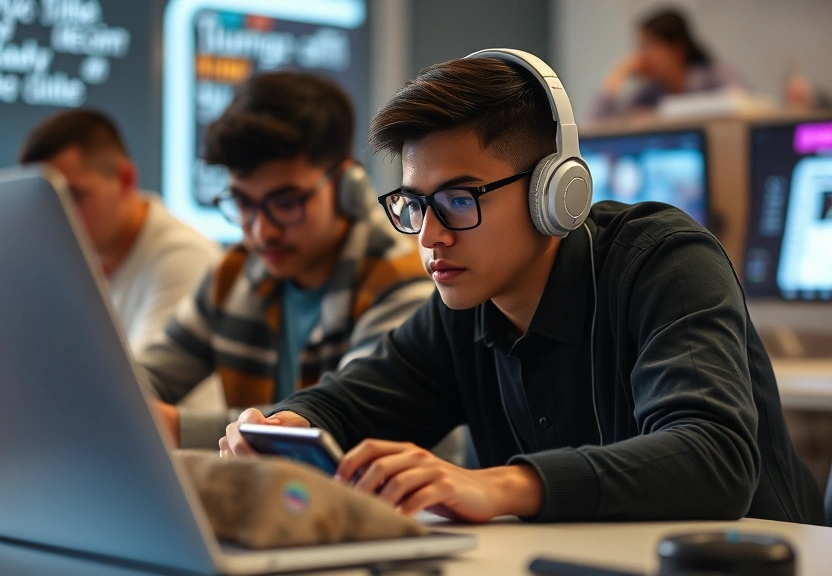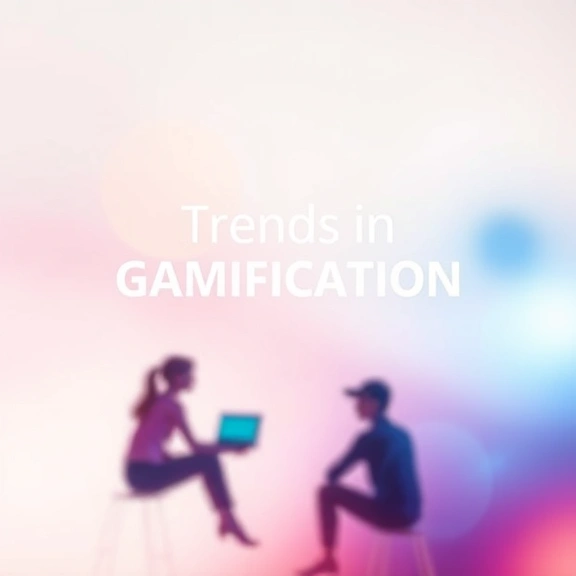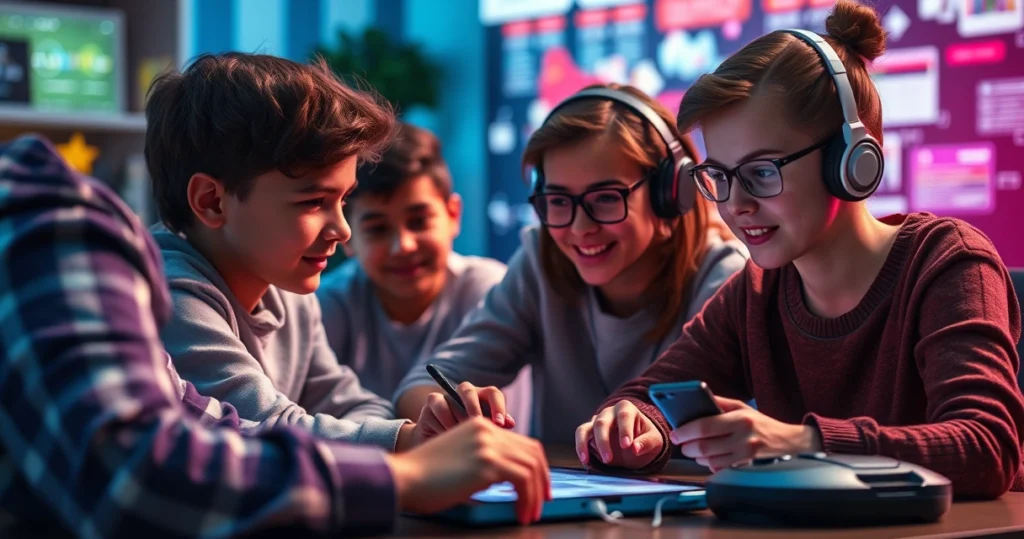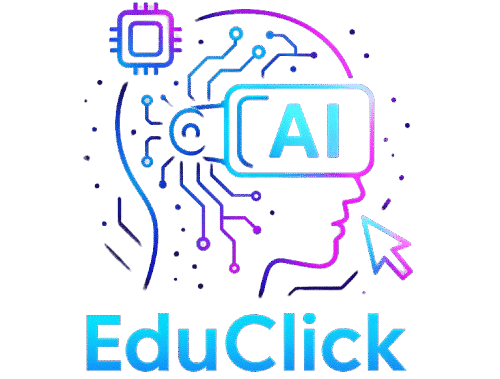Exploring the Cutting-Edge Trends in Gamification: Engaging Students Through Innovative Learning Tools
Imagine a world where learning feels less like a chore and more like an adventure. Remember the thrill of unlocking a new level in a video game or the satisfaction of finally mastering a tricky board game? What if your educational journey could elicit that same excitement and engagement? This isn’t just a dream; it’s the future of education, thanks to the remarkable trends in gamification.

As an educator, parent, or student, you may have noticed the subtle yet powerful shift in how learning environments are evolving. No longer confined to traditional methods, educational technology trends are revolutionizing how students engage with content. Gamification, in particular, transforms mundane lessons into interactive experiences, encouraging active participation and deepening comprehension. It’s not just about playing games; it’s about integrating game mechanics into the learning process to foster motivation and enhance retention.
Perhaps you’ve already encountered these innovative learning tools. Maybe you’ve seen a student light up when they earn a badge for completing a challenging math problem or witnessed a classroom erupt in collective cheer as they conquer a collaborative science quest. These moments underscore the profound impact of gamification on education. They remind us that learning can be both effective and enjoyable, bridging the gap between curriculum and inspiration.
In this article, we will delve deep into the trends in gamification, examining how they engage students and redefine educational experiences. Whether you’re an educator seeking to invigorate your teaching approach or a parent looking to enhance your child’s learning journey, understanding these trends is paramount. Let’s embark on this exploration together and uncover the true potential of gamification in education.
The Rise of Gamification in Education
Understanding Gamification: Beyond Just Playing Games
Gamification isn’t merely about incorporating games into learning. It’s about embedding game design elements such as points, levels, and challenges into non-game contexts to enhance user engagement. This approach leverages human psychology, tapping into intrinsic motivations such as competition, achievement, and collaboration.
Historical Context: From Classroom to Digital Platforms
Gamification’s roots can be traced back to traditional classroom activities like spelling bees and quizzes. With technological advancements, these concepts have evolved into sophisticated digital platforms that offer personalized learning experiences. The transition from physical to virtual learning environments has been monumental in broadening access and scalability.
Key Drivers: Why Gamification is Gaining Traction
Several factors contribute to the growing popularity of gamification in education:
- Technological Advancements: The proliferation of devices and high-speed internet has made digital gamification tools more accessible.
- Increased Engagement: Studies show that gamified learning environments enhance student engagement and motivation.
- Tailored Learning Experiences: Gamification allows for personalized learning paths, catering to individual student needs.
Innovative Learning Tools in the Gamification Landscape
The Role of Apps and Software in Modern Education
Apps and educational software are at the forefront of gamification. They offer interactive content that adapts to different learning styles, ensuring that each student can progress at their own pace. Platforms like Kahoot! and Quizlet have revolutionized how educators deliver content and assess understanding.
Virtual Reality and Augmented Reality: Bridging Realities
Virtual and augmented reality tools have added a new dimension to gamified learning. By immersing students in realistic simulations, these technologies enable experiential learning that enhances understanding and retention. For instance, AR apps can turn a history lesson into a time travel adventure, making the past come alive.
Wearable Technology: The Future of Interactive Learning
Wearable devices, such as smartwatches and fitness trackers, are increasingly being integrated into educational settings. These tools encourage physical activity, track progress, and offer real-time feedback, creating a holistic educational experience that combines physical and mental development.
🎥 Vídeo complementar sobre o tópico
Case Studies: Success Stories in Gamified Learning
Elementary Schools: Building Foundations with Fun
At the elementary level, gamification has been particularly effective. For example, an elementary school in California implemented a game-based reading program that improved literacy rates by 20% over a semester. Students were motivated by earning points and badges for completing reading challenges, fostering a love for reading.
High Schools: Preparing Students for the Future
High schools are also reaping the benefits of gamification. A case study from a high school in Texas revealed that using a gamified math platform improved student performance by 30% in standardized tests. The competitive nature of the platform encouraged students to engage more deeply with the material.
Higher Education: Fostering Collaboration and Critical Thinking
In higher education, gamification has been instrumental in encouraging collaboration and critical thinking. A university in Singapore utilized a gamified learning management system to enhance student participation in online courses, leading to a significant increase in course completion rates.
The Challenges of Implementing Gamification
Balancing Fun and Educational Value
One of the primary challenges of gamification is ensuring that the fun elements do not overshadow educational objectives. Educators must carefully design gamified experiences to strike an appropriate balance between entertainment and learning outcomes.
Resource Constraints: Time, Budget, and Expertise
Implementing gamification can be resource-intensive. Schools may face constraints related to time, budget, and the need for technical expertise. It’s crucial for educational institutions to plan strategically and allocate resources effectively to overcome these barriers.
Ensuring Accessibility and Inclusivity
To maximize the benefits of gamification, it’s essential to ensure that gamified tools are accessible to all students, including those with disabilities. This requires designing inclusive interfaces and providing necessary accommodations to support diverse learning needs.
The Future of Gamification in Education
Emerging Trends: What’s Next?
As gamification continues to evolve, several emerging trends are poised to shape its future:
- Adaptive Learning: Future gamified tools will leverage AI to adapt content in real-time based on student performance.
- Blockchain Integration: Blockchain technology may be used to securely track students’ achievements and credentials.
- Global Collaboration: Gamification will enable students from different parts of the world to collaborate on projects, fostering cross-cultural understanding.
Long-term Impact on Educational Systems
The long-term impact of gamification on educational systems is significant. By fostering a culture of active participation and continuous learning, gamification can help develop a more engaged and knowledgeable generation. Educational institutions must remain agile and open to innovation to fully realize these benefits.
Practical Steps for Educators and Institutions
Educators and educational institutions looking to embrace gamification should consider the following steps:
- Start small by integrating gamified elements into existing curricula.
- Engage with professional development opportunities to gain a deeper understanding of gamification strategies.
- Collaborate with technology partners to design and implement effective gamified learning solutions.

FAQs About Trends in Gamification and Learning Tools
What exactly is gamification in education?
Gamification in education involves applying game mechanics and principles to non-game contexts to enhance learning. It aims to motivate students by incorporating elements like points, badges, and leaderboards into the educational experience, making learning more engaging and interactive.
How do gamified learning tools benefit students?
Gamified learning tools benefit students by increasing motivation, fostering engagement, and improving retention of information. By making learning interactive and enjoyable, these tools can help students develop a love for learning, enhance problem-solving skills, and encourage collaboration.
Can gamification be applied to all subjects?
Yes, gamification can be applied to a wide range of subjects, from math and science to language arts and social studies. The key is to design activities and challenges that align with the learning objectives of each subject, ensuring that they reinforce the intended educational outcomes.
What role does technology play in gamification?
Technology is a critical enabler of gamification in education. It provides the platforms and tools needed to create interactive and adaptive learning experiences. Technologies like augmented reality, virtual reality, and AI play pivotal roles in enhancing the effectiveness of gamified educational tools.
How can teachers start implementing gamification in their classrooms?
Teachers can start by identifying areas within their curriculum where gamification can enhance engagement. They should explore existing gamification tools and platforms that align with their teaching goals and gradually integrate these into their lessons, monitoring student feedback and outcomes to adjust strategies as needed.
Are there any drawbacks to using gamification in education?
While gamification has many benefits, potential drawbacks include the risk of overshadowing educational content with entertainment, the need for resources and expertise to implement gamification effectively, and the challenge of ensuring accessibility for all students. It’s crucial to balance fun with learning objectives.
How does gamification impact student motivation?
Gamification positively impacts student motivation by tapping into intrinsic motivators such as competition, achievement, and recognition. By earning points, rewards, and badges, students are encouraged to engage more actively with the learning material, which can lead to improved academic outcomes.
Can gamification help with remote learning?
Yes, gamification can significantly enhance remote learning experiences. By providing interactive and engaging learning environments, gamified tools can help maintain student motivation and participation in virtual classrooms, bridging the gap between traditional in-person education and online learning.
Conclusion: Embracing the Future of Education with Gamification
As we stand on the brink of a new era in education, the trends in gamification offer a glimpse into a future where learning is not just informative but transformative. By integrating innovative learning tools into educational practices, we can unlock new potentials in student engagement, comprehension, and achievement.
Your journey into understanding and implementing gamification begins now. The insights and examples shared in this article equip you with the tools to make informed decisions about how to incorporate these techniques into your educational approach. Whether you’re an educator eager to innovate or a parent supporting your child’s learning journey, embracing gamification can lead to remarkable outcomes.
We invite you to take action today. Explore gamified platforms, engage with communities of educators, and experiment with different strategies to find the best fit for your educational environment. Your commitment to enhancing learning experiences through gamification will shape the future of education, inspiring a generation of learners to thrive in an ever-evolving world.
Key Takeaways
- Gamification enhances the educational experience by incorporating game-like elements into learning environments, boosting student motivation and engagement.
- Innovative learning tools such as apps, virtual reality, and wearable technology play a significant role in delivering gamified education.
- Case studies demonstrate the effectiveness of gamification across different education levels, showing improvements in literacy, test scores, and collaboration.
- Challenges exist, including maintaining a balance between fun and educational value, managing resource constraints, and ensuring inclusivity.
- The future of gamification in education is promising, with emerging trends like adaptive learning and blockchain integration poised to further transform the landscape.




